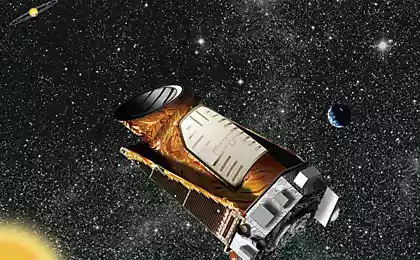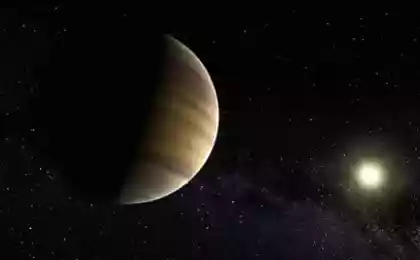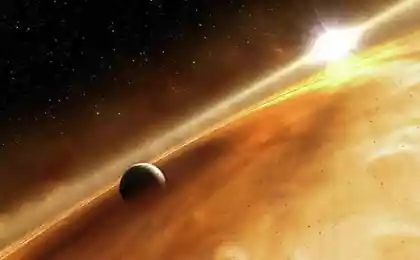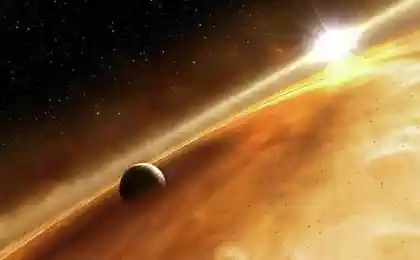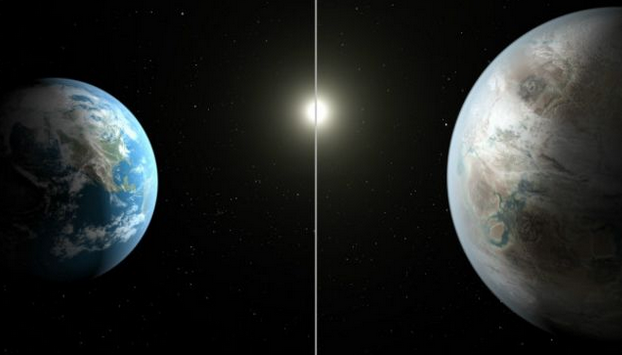
The comparative size of the Earth and the new discovered planet
on materials BBC.
With the help of NASA's Space Telescope "Kepler" smogoli scientists a glimpse into previously inaccessible to explore the depths of the universe. Recently, a list of open with the help of new planets has expanded, dubbed Kepler-452b. It orbits around its star roughly the same distance as the Earth, but its diameter is slightly larger than the Earth - by 60%. Scientists say that the planet earth More features than other terrestrial analogs, previously discovered. These planets are very interested astronomers because they are compact enough and cool to their surface water might be kept in the liquid state. This means that they can exist conditions favorable for life.
The star system Kepler-452 is located at a distance of 1,400 light-years from Earth in the constellation Cygnus. At the maximum speed achieved today by any of man-made satellites, on the journey to the planet require over 25 million years. The new planet has expanded the list of open "Kepler" exoplanets - celestial bodies that rotate, like Earth, around its sun.
It seems Mr. Milner
greatly during invests its assets in search of extraterrestrial life forms . The list of candidates in the world among the newly discovered celestial bodies is growing rapidly, as the probability of finding one of them signs of civilization.
Exoplanets. H4> At the moment, the attention of scientists focused on approximately 500 alleged to planets located at the distant stars.
They are among the 4175 candidates in the world identified with this telescope without the current findings. Until now, most of these candidates later received the status of proven exoplanets.
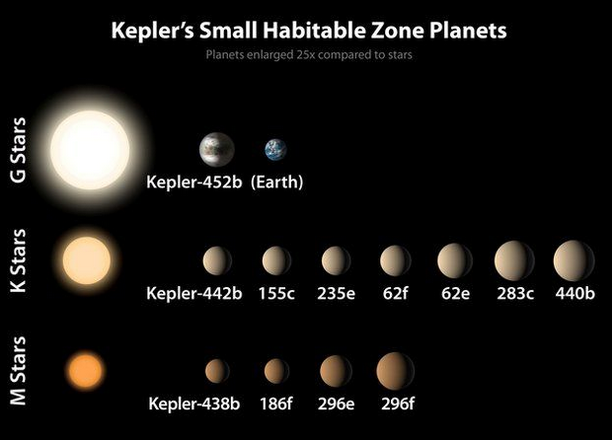
the comparative size of the opening of exoplanets
A small portion of these planets the size is not too superior to Earth and is located within the so-called "habitable zone" around its star, similar in structure to the sun - that is where, in principle, may be liquid water, which is considered a prerequisite sustain life. At the moment, in different star systems found 12 planets, presumably meet these requirements. Kepler-452b - the first planet "habitable" type, whose existence is not contested. The answer to the question of which of these planets more like Earth other, depends on what kind of characteristics in the first place be taken into account.
Area of life h4> The data collected by the telescope, "Kepler", allow only estimated to estimate the size of the planet relative to the star around which it revolves. If you know the size of the star around which the planet - you know the size of the planet. The rest of the details are still shrouded in mystery. Even the measurement of the mass of the planets is a much more difficult task. As a result, it remains an open question of what constitutes an exoplanet candidates -with equal probability they may be of a craggy rock or a small ball of gas and even something more exotic. Other planets "Kepler" located in the "zone of life" may be more similar to the Earth. For example, Kepler-186f diameter of approximately 1, 17 more than the Earth, and Kepler-438b diameter is about 1, 12 from the earth.
With a diameter of 1, 6 earth Kepler-452b falls into a category called "super-Earths." In our solar system there is no such type planet. For this reason, super-Earths are very interesting, but it does not mean that they are similar to Earth.
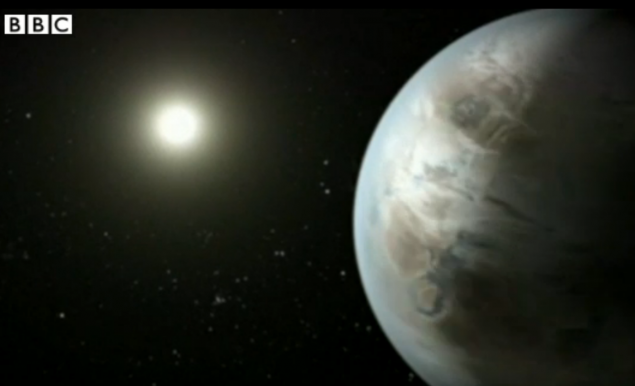
Interest in open planet warms up the fact that the type of the star around which Kepler-452b, reminiscent of the sun. Other planets, "Kepler" found in "areas of life" revolve around "red dwarfs" - stars, much less hot than the sun. Therefore the world should revolve much closer to them, to receive the same level of heat. Thus, it can be potentially rocky super-Earths orbit similar to Earth's. It is this combination of star and planet orbit highlights on the background of previously detected.
Source: geektimes.ru/post/259264/





